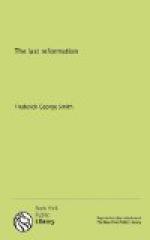The second beast also exhibits the characteristics of a persecuting power, and in this respect it is similar to the ten-horned beast. The early history of Protestantism shows that at that time the principle of religious intolerance brought over from Romanism manifested itself in the actual putting to death of numerous dissenters. Thus, we find Calvin, at Geneva, consenting to the burning of Servetus because of a difference in religious views. At a convention in Torgau, in 1574, the Lutherans established the real presence of Christ in the eucharist and then instigated the Elector of Saxony to seize, imprison, and banish those who differed from them in sentiment, as a result of which Peucer suffered ten years of the severest imprisonment and Crellius was put to death. The Protestant Council of Zurich condemned Felix Mantz to be drowned because he insisted that infant sprinkling was not baptism. In England the “Bloody Six Articles” of Henry VIII are a silent testimony to the intolerant spirit of that age, when the royal reformer dragged dissenters forth to execution. Witness also the twelve years’ imprisonment of John Bunyan and hundreds of others confined in jails throughout the country; the persecution of the Quakers; the relentless opposition to the Covenanters of Scotland, who were hunted and destroyed like beasts because they insisted on their right to worship God in their own way. It was this intolerant spirit that drove the Puritans to the inhospitable shores of America, where they might have the free privilege of worshiping God according to the dictates of their own conscience.
It is possible that the persecuting principle ascribed to the two-horned beast may include both the literal and the ecclesiastical cutting off, reference being made directly to the spirit of intolerance which manifested itself first in literal slaughter and later in an unwarranted ecclesiastical exclusiveness.
The “number of the beast” alludes to his pretentious claims and is probably a symbol of division. The definite number 666 is said to be also the number of a man, and since the pope is the most important man connected with the papal system, it is natural to identify him with the individual referred to. Paul doubtless pointed out the pope particularly as the “man of sin,” “the son of perdition” (2 Thess. 2:3). In former ages, before the modern system of notation was introduced, the only method of denoting numbers was by employing the letters of the alphabet, certain letters having the power of number as well as of sound. We still employ the same system for certain purposes. The number of a name was simply the number denoted by the several letters of that name.
The pope has a special title. He wears in jeweled letters upon his mitre the inscription, Vicarius Filii Dei—Vicar of the Son of God. Taking from his name all the letters that the Latins used for numerals, we have just 666.




